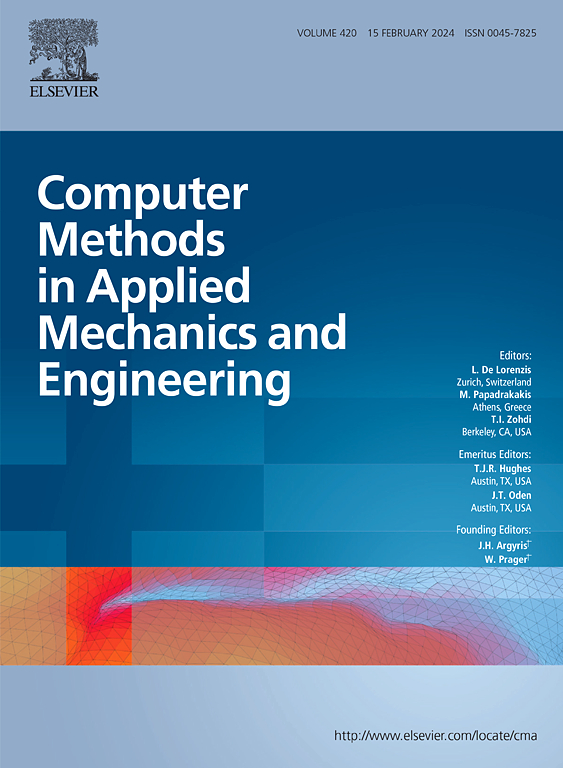A generalized non-hourglass updated Lagrangian formulation for SPH solid dynamics
IF 6.9
1区 工程技术
Q1 ENGINEERING, MULTIDISCIPLINARY
Computer Methods in Applied Mechanics and Engineering
Pub Date : 2025-03-28
DOI:10.1016/j.cma.2025.117948
引用次数: 0
Abstract
Hourglass modes, characterized by zigzag particle and stress distributions, are a common numerical instability encountered when simulating solid materials with updated Lagrangian smoothed particle hydrodynamics (ULSPH). While recent solutions have effectively addressed this issue in elastic materials using an essentially non-hourglass formulation, extending these solutions to plastic materials with more complex constitutive equations has proven challenging due to the need to express shear forces in the form of a velocity Laplacian. To address this, a generalized non-hourglass formulation is proposed within the ULSPH framework, suitable for both elastic and plastic materials. Specifically, a penalty force is introduced into the momentum equation to resolve the disparity between the linearly predicted and actual velocity differences of neighboring particle pairs, thereby mitigating the hourglass issue. The stability, convergence, and accuracy of the proposed method are validated through a series of classical elastic and plastic cases, with a dual-criterion time-stepping scheme to improve computational efficiency. The results show that the present method not only matches or even surpasses the performance of the recent essentially non-hourglass formulation in elastic cases but also performs well in plastic scenarios.
求助全文
约1分钟内获得全文
求助全文
来源期刊
CiteScore
12.70
自引率
15.30%
发文量
719
审稿时长
44 days
期刊介绍:
Computer Methods in Applied Mechanics and Engineering stands as a cornerstone in the realm of computational science and engineering. With a history spanning over five decades, the journal has been a key platform for disseminating papers on advanced mathematical modeling and numerical solutions. Interdisciplinary in nature, these contributions encompass mechanics, mathematics, computer science, and various scientific disciplines. The journal welcomes a broad range of computational methods addressing the simulation, analysis, and design of complex physical problems, making it a vital resource for researchers in the field.

 求助内容:
求助内容: 应助结果提醒方式:
应助结果提醒方式:


